- News
- Reviews
- Bikes
- Accessories
- Accessories - misc
- Computer mounts
- Bags
- Bar ends
- Bike bags & cases
- Bottle cages
- Bottles
- Cameras
- Car racks
- Child seats
- Computers
- Glasses
- GPS units
- Helmets
- Lights - front
- Lights - rear
- Lights - sets
- Locks
- Mirrors
- Mudguards
- Racks
- Pumps & CO2 inflators
- Puncture kits
- Reflectives
- Smart watches
- Stands and racks
- Trailers
- Clothing
- Components
- Bar tape & grips
- Bottom brackets
- Brake & gear cables
- Brake & STI levers
- Brake pads & spares
- Brakes
- Cassettes & freewheels
- Chains
- Chainsets & chainrings
- Derailleurs - front
- Derailleurs - rear
- Forks
- Gear levers & shifters
- Groupsets
- Handlebars & extensions
- Headsets
- Hubs
- Inner tubes
- Pedals
- Quick releases & skewers
- Saddles
- Seatposts
- Stems
- Wheels
- Tyres
- Health, fitness and nutrition
- Tools and workshop
- Miscellaneous
- Tubeless valves
- Buyers Guides
- Features
- Forum
- Recommends
- Podcast
feature
 The 15 most innovative road bikes of the past decade Dec 2019 - number
The 15 most innovative road bikes of the past decade Dec 2019 - numberBikes of the decade: The 15 most innovative road bikes from 2010 to now
Road bikes have changed a lot over the past decade and here are the models that we reckon have been the most innovative.
This is just a bit of fun but let's first set out our rules. This list includes models introduced to the world from the start of 2010, so that means influential bikes like the Genesis Croix de Fer and the Felt AR don't get it. We've made an exception where a model has had a huge update during the 2010s, such as – spoiler alert! – the Trek Madone where the 9 Series didn't have a whole lot in common with the previous incarnation, other than the name.
We've included only full production bikes that you could get reasonably easily in the UK. Concept bikes and anything that only made it as far as Hall 99 of a trade show in Azerbaijan don't count.
We've stuck purely to road bikes here; this list doesn't extend to gravel bikes (we're covering them in another article), time trial bikes, mountain bikes or e-bikes.
The vast majority of bikes included here are carbon fibre simply because that's the material most commonly used for high-tech new bikes.
We've not ranked this list; the bikes are set out in chronological order based on when we first saw them (which isn't usually their model year).
We've been booting this list around the road.cc office for a few days, and we've had plenty of debate – to say the least – about what should be included and what should be left out. We're bound to have overlooked something, though, and you could well disagree with our selection. Let us know what you think in the comments .
Scott Foil
Aero road bikes from brands like Cervelo existed long before this decade but Scott helped make the concept more mainstream with the release of its Foil, first seen in the 2010 Tour de France and released in its 2011 range. The Foil resulted from Scott working with renowned aerodynamicist Simon Smart. The bike didn't have the long, sleek airfoil shaped tubes and cutaway seat tube of most aero road bikes. Instead the tubes had a truncated tail, squared off at the back to allow Scott to deliver on the weight and stiffness front. Speaking of weight, Scott got the frame down to an impressive 850g.
Why it's here Cutting-edge aerodynamics at a superlight weight
Find out more
Cervelo S5
Cervelo's S3 pre-dates the 2010s, but the S5 came along in 2011 with more aero features than you could shake a stick at: a cutaway seat tube designed to smooth the airflow from the frame to the rear wheel, a dropped down tube to manage the airflow from the fork to the frame and minimise turbulence behind the fork crown, an hourglass head tube, crazy-thin seatstays, and so on. One surprising feature was the fairly tall head tube which Cervelo decided on because it's a more aerodynamically efficient approach than going for a shorter head tube and a big stack of spacers.
Why it's here Cervelo chucked all of its extensive aero know-how at this one
Find out more
Condor Super Acciacio
After two years in development, 2011 saw London-based Condor Cycles release the Super Acciacio, a high-end race bike made from Dedacciai triple-butted steel tubing, TIG welded in Italy. Rather than an exercise in retro chic, the Super Acciacio was designed with a modern geometry and up-to-date features like a tapered head tube and a BB30 bottom bracket, the idea being to deliver plenty of frame stiffness and sharp, accurate handling. It was made considerably lighter with an update in 2013 and is still very much a part of Condor's range today.
Why it's here A race bike that proved steel isn't just for the vintage crowd
Find out more
Cannondale SuperSix Evo
You could make a strong case for the inclusion of Cannondale's SystemSix in this list, but we've chosen the SuperSix Evo from 2011 (the model year was 2012), the lightest frame of which came in at just 695g. The frame was made with an underlying structure of what Cannondale calls its BallisTec carbon fibre for toughness and the ability to survive a crash, and high-modulus carbon added over the top in key areas to provide extra stiffness. The layup was very complex with continuous high modulus fibres coming down the seat tube, looping right around the bottom bracket shell, and then going back up the seat tube.
Why it's here The highest stiffness-to-weight ratio of its era
Find out more
Trek Domane
Trek introduced the Domane endurance bike in 2012, its first model to feature an IsoSpeed decoupler. This allowed the seat tube to move independently of the top tube and seatstays in order to smooth the ride. It has been further developed since then and front-end IsoSpeed has been added, but the key point is that the original Domane was a mainstream road bike with a technical frame feature specifically designed to allow a degree of movement at the saddle, and several other bikes have followed in its wake.
Why it's here Challenged traditional design by decoupling the seat tube for increased compliance
Find out more
Factor Vis Vires
We're guessing that you didn't see a Vis Vires out on the streets but it is one of the most radical road bikes road.cc has ever tested. Revealed in 2013, it featured a split down tube – made from two individual aerofoil tubes joined at the top tube and bottom bracket, and braced in the middle to maintain stiffness – a fork with an external steerer, an integrated stem and Factor-branded and colour matched components. That fork was super-stiff and the arms of the mini V-brakes tucked in closely behind, hidden from the wind. We're not sure if the radical design or the £9,999 price tag was to blame, but the Vis Vires no longer appears in Factor's lineup.
Why it's here Novel features for delivering aero efficiency and loads of stiffness
Find out more
Bianchi Infinito CV
Bianchi's Infinito endurance bike existed prior to 2013 but that's the year when Countervail Vibration Cancelling Composite Technology was added. Countervail is a carbon material from Material Sciences Corp with a fibre architecture and viscoelastic resin designed to reduced vibration, and it's embedded within the bike’s layup, the idea being to reduce fatigue and increase energy savings, and improve handling and rider control. Bianchi has since introduced Countervail to other high-end bikes in its range, including the Specialissima and the Oltre XR4.
Why it's here Includes Contervail material specifically designed to damp vibration
Find out more
Pinarello Dogma F8
The first Dogma was launched prior to the 2010s but it was the release of the Dogma F8 in 2014 that arguably saw the biggest evolution in the bike's history. Pinarello collaborated with Team Sky’s other partner, car manufacturer Jaguar and its aerodynamic team, and so the F8 gained from substantial CFD (computational fluid dynamics) design and wind-tunnel testing. The Dogma F8, with Flatback truncated tube profiles, was claimed to be 47% more aerodynamically efficient than the previous Dogma 65.1, as well as being stiffer and lighter. The commitment to asymmetric design remained but the famous curves to the fork legs and seatstays were softened.
Why it's here Introduced a raft of aero features that are still used today
Find out more
Look 795 Aerolight
Some people find the Look 795 Aerolight to be – how can we put it? – visually challenging, but there's no arguing with the amount of innovation going on here. NACA airfoil tube profiles, a stem integrated into the head tube/top tube, the front brake integrated into the fork, patented internal cable routing, an adjustable stem, a vibration-isolating seatpost with acres of fore/aft adjustment... Phew! This 2014 debutant worked very hard to minimise drag and provide a top-level performance
Why it's here No holds barred in the search for aero efficiency
Find out more
Specialized Allez Smartweld
Specialized's D’Aluisio Smartweld Technology was introduced at the top of the aluminium Allez range in the 2014 product year and it trickled down to cheaper models 12 months later. The design features a head tube, top tube, and down tube that have been hydroformed with dome-like edges. When butted together, a valley is created that's filled with weld material, the idea being to create a joint that's stiffer, more durable and more consistent than usual. Specialized said that the strength of the weld contact points allowed it to use thinner tube walls in other areas in order to engineer more compliance into the frame.
Why it's here Proved that tech progress is still possible with aluminium
Find out more
Trek Madone 9 Series
The Madone has been around for donkey's years but the 9 Series, revealed in 2015, was a radical departure from anything that had gone before, offering what Trek called ‘unparalleled aerodynamics’ along with the IsoSpeed system first developed for the Domane (see above) for increased comfort. This decoupler allows the seat tube to move independently from the rest of the frame. When we reviewed the bike we found that it offered a fabulous performance out on the road, the technology contributing to a very fast and comfortable ride.
Why it's here Aero tech combined with an IsoSpeed system to smooth the ride
Find out more
Specialized Venge ViAS
You could make a case for the first Venge – launched in 2011 – being more innovative, or the current version, but we're going for the Specialized S-Works Venge ViAS, announced in 2015, the first bike to be developed in Specialized's own wind tunnel (called the Win Tunnel). Every tube profile was designed for aero efficiency and Specialized claimed that the proprietary integrated rim brake callipers had a “near-zero drag coefficient". The bike even had a new aero handlebar, stem and wheelset.
Why it's here Specialized went on a single-minded quest to reduce drag
Find out more
Focus Izalco Max
Back in 2015, Focus unveiled their new Izalco Max Disc which, with a 790g frame weight and 6.8kg (14.99lb) SRAM Red build, came with the claim of being the lightest disc brake-equipped production road race bike on the market. It had longer chainstays than was common at the time to cope with a 142mm rear spacing, Focus's Rapid Axle Technology (RAT) thru-axles at both ends, and was among the first road bikes to use Shimano's Flat Mount standard (as opposed to disc mount) disc brakes. It was also fitted with a lightweight Concept CPX Plus seatpost that featured a carbon layup and hollow section designed to absorb vibrations.
Why it's here Proved that disc brakes and a superlight weight aren't mutually exclusive
Find out more
Specialized Roubaix with Future Shock
The Roubaix endurance bike has been around since 2004 but in 2016 Specialized announced that it would be adding its Future Shock system – a lightweight suspension design relying on a spring inside a cartridge located between the stem and head tube – to provide 20mm of movement. The Future Shock's positioning means it's only supporting your upper body weight. It's not bouncy but is instead quite firm, yet it reacts to the smallest road buzz well. You get a smoother ride and enhanced control without taking a hit on handling or efficiency.
Why it's here Introduced the Future Shock front suspension system for road bikes
Find out more
Giant Propel Advanced SL Disc
Giant added disc brakes to its Propel aero road bike in 2017 and claimed that the flagship model, the Propel Advanced SL Disc, had the highest stiffness-to-weight ratio of any bike in its class, and a lower drag coefficient at a wider range of yaw angles than its non-disc-brake predecessor. The brand said that proper integration of the disc brakes had allowed it to create a bike that was more aerodynamically efficient because it could open up the fork crown area in a way not possible with rim brakes. Although Giant has since added a rim brake version, this bike was launched with disc brakes only.
Why it's here A disc brake road bike with less drag than its rim brake predecessor
Find out more
Mat has been in cycling media since 1996, on titles including BikeRadar, Total Bike, Total Mountain Bike, What Mountain Bike and Mountain Biking UK, and he has been editor of 220 Triathlon and Cycling Plus. Mat has been road.cc technical editor for over a decade, testing bikes, fettling the latest kit, and trying out the most up-to-the-minute clothing. He has won his category in Ironman UK 70.3 and finished on the podium in both marathons he has run. Mat is a Cambridge graduate who did a post-grad in magazine journalism, and he is a winner of the Cycling Media Award for Specialist Online Writer. Now over 50, he's riding road and gravel bikes most days for fun and fitness rather than training for competitions.
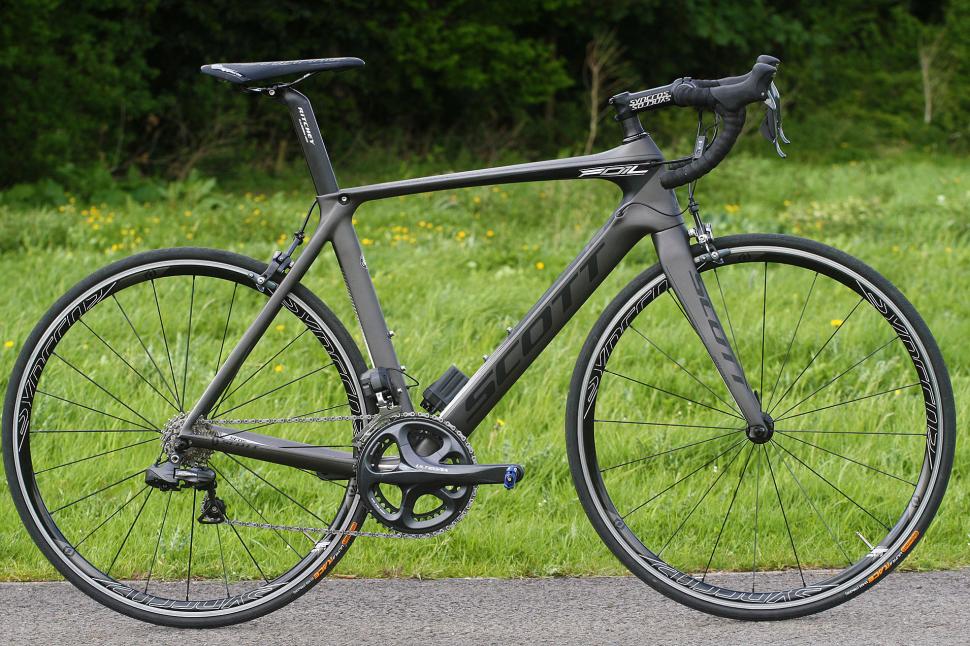






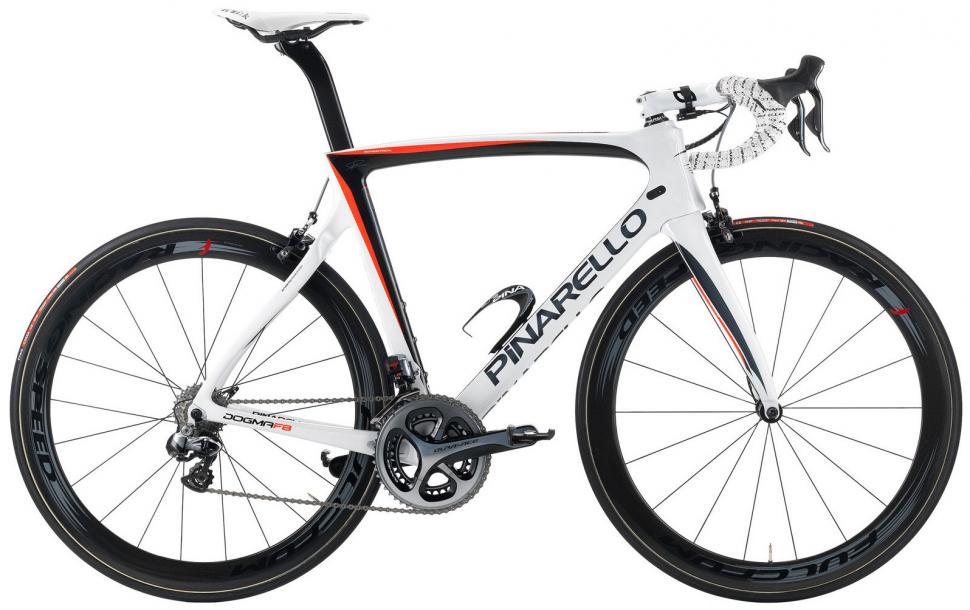
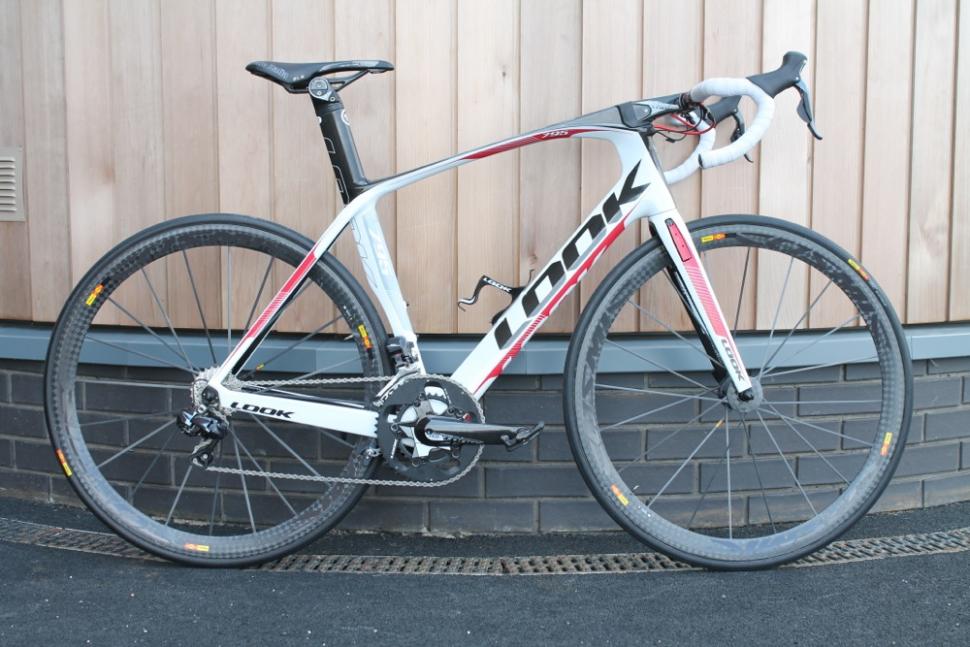

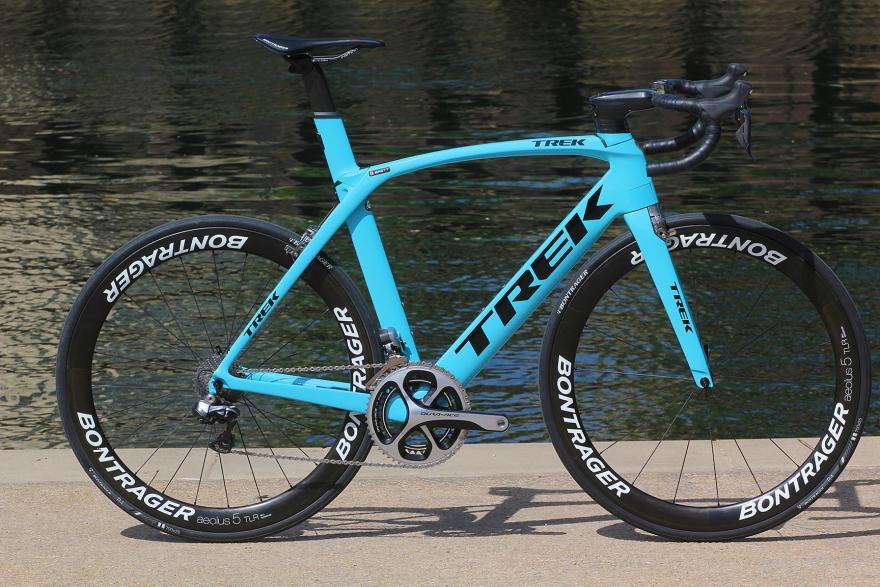
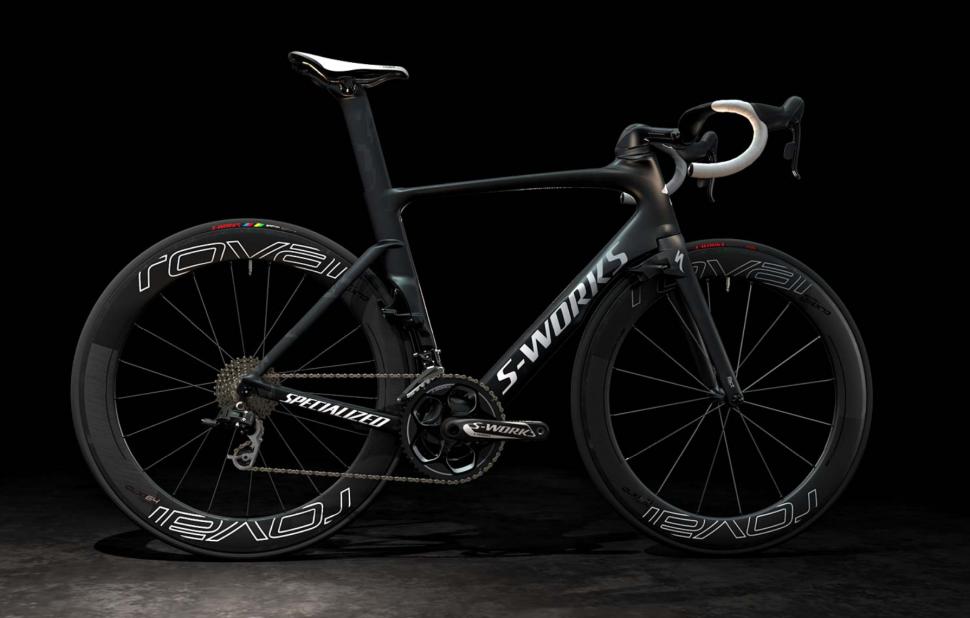


I too remain unconvinced by the "pinch of salt" argument, hence the "drink more...who knew?" comment. Not forgetting of course the worlds best...
Care to comment on the fact that according to Mr.O'Connell and an external road safety company's data there have only been three cyclist Personal...
Some locals (apart from road.cc regulars) like the scheme. Admittedly in the Beaufort Rd section where the carrot (end of what was pretty...
My guess is that they sell mainly on the German market - feel free to correct me. That might explain why they are not "pushing" their products,...
Now Emily Chappell really liked the Lezyne , I have the HV version, good, but I find the handle uncomfortable in use. I've often wondered about the...
What about this one!? Taken in Cardiff Civic Centre 1939
Charlie Alliston got 18mths and is the reference case (because there are so few cases) for all campaigns by anti-cyclists that 'cyclists are not...
My local football practice pitches (all weather, in a fenced off area, are regularly the scene of inconsiderate parking, with vehicles blocking the...
Assos ASOS anyone?
Replace them all with Bromptons and they'd take up zero space within days or even hours, as they are all relocated elsewhere. To eBay or possibly...